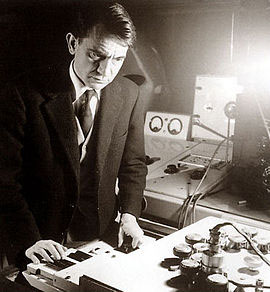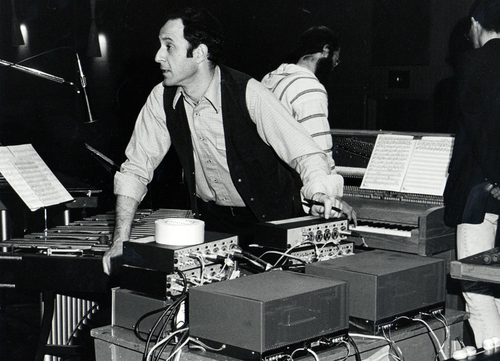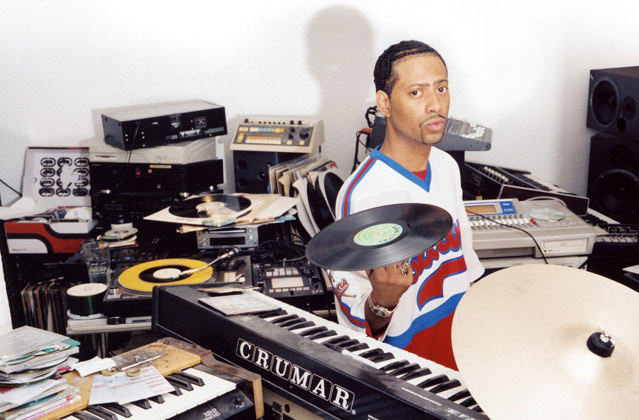A couple of weeks ago I was searching for inspiration for a follow up piece to my lonely article about music's relationship with improvisation, when the right honorable Charlie Croft suggested I tackle the subject of sampling in Hip Hop.
So what does sampling in hip hop represent, and how did it come to be so definitive in the genre?
I'd suppose a large part of my personal thoughts are involved with this, and my opinions on what it represents are so subjective, but it's really important to realise that sampling is not without its relevant history and traditions. These play a large mechanic in helping govern the patterns of usage we've seen in the genre to this day, but far from tell the whole story. It's worth looking at what sampling is, and where and why it all started and how it developed in the genre.

Pierre Schaeffer - http://upload.wikimedia.org/wikipedia/en/thumb/c/ca/L430xH465_jpg_Schaeffer_big-2eb70.jpg/270px-L430xH465_jpg_Schaeffer_big-2eb70.jpg
In France in the 1940s, radio presenter and audio engineer Pierre Schaeffer began experimenting with the use of recording, editing and processing sound. Schaeffer's early developments in sound manipulation blossomed during his time spent working in radio stations, and ultimately led him to develop his own concept of musical composition by the turn of the 1950s, Musique Concrete. Of this he said, "when I proposed the term 'musique concrète,' I intended … to point out an opposition with the way musical work usually goes. Instead of notating musical ideas on paper with the symbols of solfege and entrusting their realization to well-known instruments, the question was to collect concrete sounds, wherever they came from, and to abstract the musical values they were potentially containing", which demonstrates the inherent shift of traditional compositional focus from tonal and rhythmic elements towards the aesthetic and concept of layering sound through time.
Pierre Schaeffer - "Etude aux Chemins de Fer"
As you can hear in the above clip, this study of Schaeffer's is made up solely from hard-recordings of steam trains and railway equipment. (This is widely regarded as one of the earliest examples of sampling outside of the use of sound in cinema up to this point, just watch any Laurel & Hardy film, trust me). Schaeffer went on to develop performance techniques in sound spatialisation (emphasising the location and tracking of sound during a performance, the early principle upon which surround sound is based), controlled by the performer in real time, in addition to being appointed an associate professor at the Paris Conservatoire, creating a "class of fundamental music and application to the audiovisual". He did pretty well for himself.

Steve Reich - http://userserve-ak.last.fm/serve/500/82803247/Steve+Reich+03.png
The principles of Musique Concrete led naturally into the work of composers such as Steve Reich and Terry Riley through the 1960s who manipulated tape-loops with recorded sampled sounds, developing concepts of electroacoustic and ushering a new-wave of minimalist Classical composition. (http://vimeo.com/3473292 Steve Reich - It's Gonna Rain) The impact of the work of Schaeffer, the early Electroacoustic composers and the Minimalists acted to shift the perception of what could be accepted not only as composition, but as music as a whole. In the past composers had been restricted to governing timbral qualities of their works through performance directions (Note attacks, directions on instrumental techniques, dynamic markings), developments in recording and audio manipulation techniques through the 20th century changed all of this, opening up a new world of compositional possibilities for creative musicians. In a matter of decades the world had essentially been introduced to sound design.
So how is any of this relevant to sampling in hip hop, and how could such apparently distal and disparate forms of music impose any bearing upon the genre?

Madlib in the lab - http://www.google.co.uk/imgres?um=1&sa=N&rlz=1C1TEUA_enGB490GB490&hl=en&biw=1366&bih=643&tbm=isch&tbnid=4rV5f5IPNdQ9EM:&imgrefurl=http://www.acclaimmag.com/music/event-madlib-medicine-show-oz-tour/&docid=8V-JrdzYWgv_IM&imgurl=http://dmpmnxvfdwr3.cloudfront.net/wp-content/uploads/2012/08/madlib_04chriswoodcock.jpg&w=639&h=420&ei=eEdrUaTbBcqx0QXkq4GICQ&zoom=1&ved=1t:3588,r:43,s:0,i:234&iact=rc&dur=1486&page=2&tbnh=168&tbnw=243&start=19&ndsp=25&tx=132&ty=84
Is it right for sampling musicians to appropriate music composed in the conventional sense, by someone else? Is this theft? Does it represent short comings in musical understanding or creativity? In reality, if you find yourself asking this questions (which perhaps rightly you should) it is important to abstract yourself from your perspective on what music composition 'is'. Most western music education is fundamentally based around the use of pitch within tonal frameworks to create melody, polyphony and perhaps even complex harmony, which is then arranged linearly using (relative) differing increments of time-spacing, or, rhythm.
Pitch and rhythm seem so much more apparent in our immediate appreciation of most musics; we are conditioned to notice them. However it is only when we dissolve this music appreciation 'operating system' which seems to be installed in us at an early age, and open our perception towards in particular the appreciation of timbre and form, we begin to find whole new avenues for music experimentation and creative development.
It seems apprpriate to finish this first volume with a few examples. These are not Hip Hop tracks, but more just examples of Music composed with samples as their main artistic and creative basis. There are some beautiful pieces in here, enjoy.
Burial - Speedball2
Amon Tobin - The Clean Up
Ricardo Villalobos - Fizheuer Zieheuer

